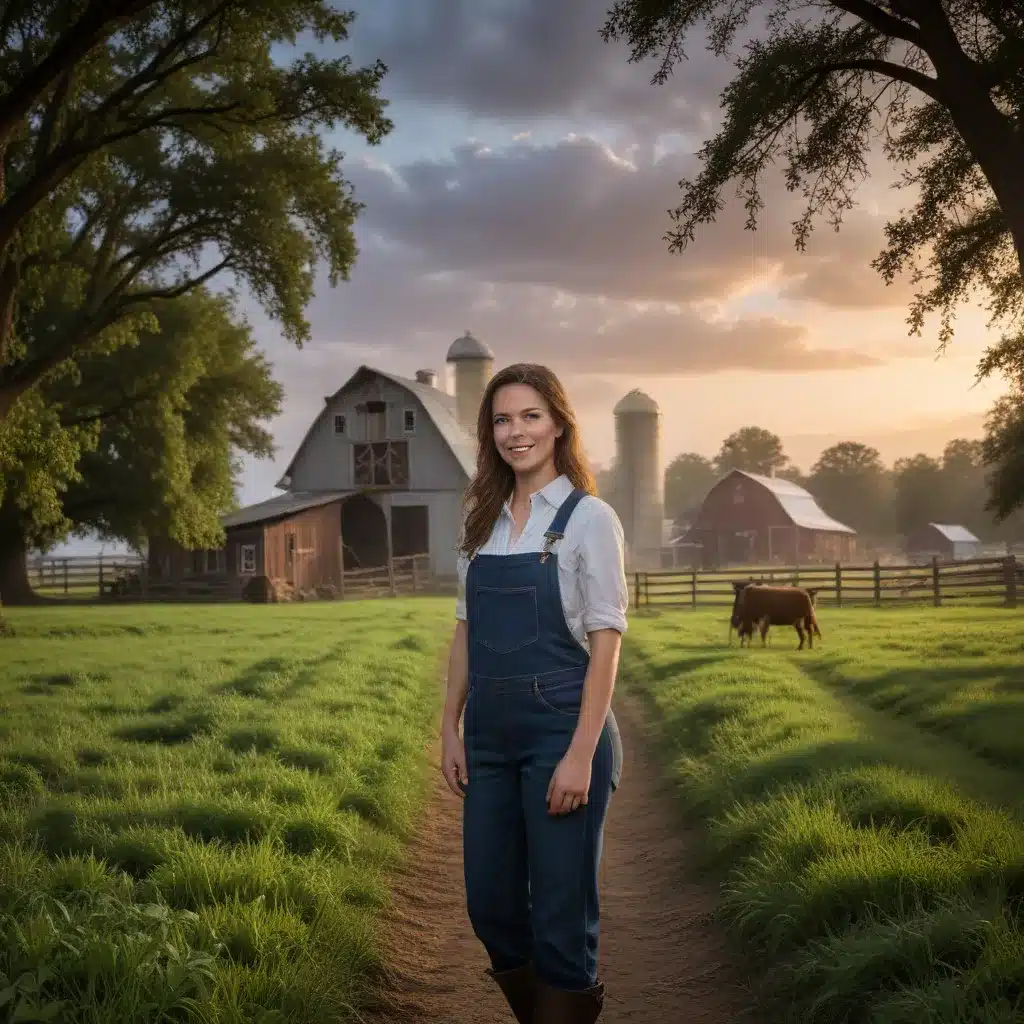
Farming is a way of life that offers a constant source of inspiration for photographers. From the vibrant colors of blooming flowers and the rhythmic movement of grazing livestock, to the quiet serenity of a sun-dappled vegetable garden, the farm is a treasure trove of visual delights. As an educator at Crooked Pines Farm, I’ve had the privilege of exploring the many facets of farm photography, and I’m excited to share my insights with you.
Photography Techniques for Farm Imagery
Composition Considerations
When photographing the farm, pay close attention to your composition. Position your subjects to create a sense of depth and balance. For example, frame a haystack or a weathered barn with the lush green of a pasture or the golden hues of a wheat field. Experiment with different angles, such as shooting from a low perspective to accentuate the grandeur of towering silos or capturing a bird’s-eye view of a vibrant vegetable patch.
Lighting Strategies
Lighting is key to capturing the true essence of the farm. Take advantage of the golden hour, the magical period just before sunrise and after sunset, to bathe your subjects in a warm, glowing light. Cloudy days can also be a boon, as the soft, even light helps to bring out the details and textures of rustic farm structures and produce. Don’t be afraid to play with shadows and highlights to create a sense of depth and drama.
Capturing Movement and Texture
The farm is a dynamic place, alive with the rhythm of daily activities. Use shutter speed to freeze the motion of a galloping horse or the fluttering wings of a pollinator visiting a flowering plant. Slow down your shutter to blur the movement of a swaying cornfield or a cascading waterfall, evoking a sense of tranquility. Embrace the textures of the farm, such as the rough bark of an apple tree or the intricate patterns of a honeycomb, to add depth and interest to your images.
The Essence of Farm Life
People and Animals
The heart of the farm lies in its inhabitants – the hardworking farmers, the curious children, and the majestic animals that call it home. Capture the bond between a farmer and their prized livestock, the infectious laughter of kids exploring a pumpkin patch, or the peaceful moments of a farmer tending to their vegetable garden. These intimate portraits will help tell the story of the farm and the people who bring it to life.
Seasonal Transitions
The farm is a constantly evolving canvas, with each season bringing its own unique beauty. Document the vibrant blooms of spring, the lush foliage of summer, the warm harvest hues of fall, and the serene snowscapes of winter. Pay attention to the subtle changes in the landscape, such as the lengthening shadows or the shifting light conditions, to capture the essence of each season.
Architectural Elements
The buildings and structures of the farm are as integral to its character as the natural elements. Photograph the weathered barns, the quaint farmhouses, the sturdy silos, and the charming outbuildings that dot the landscape. Experiment with different perspectives, such as framing a tractor in the foreground or capturing the reflection of a windmill in a nearby pond.
Storytelling Through Farm Photography
Documenting Daily Activities
The farm is a hive of activity, from the early morning milking to the late-afternoon harvest. Use your camera to document the rhythms of daily life, whether it’s a farmer pruning their orchard, a group of children learning about composting, or a family enjoying a farm-to-table meal. These candid moments will help to preserve the living history of the farm.
Highlighting Local Produce
The farm is the heart of the local food system, and your photographs can play a vital role in showcasing the bounty of the land. Capture the vibrant colors and textures of freshly harvested fruits and vegetables, the intricate details of baked goods made with locally sourced ingredients, and the hands-on process of preserving the harvest for the winter months.
Preserving Cultural Heritage
Many farms are steeped in rich cultural traditions, passed down from generation to generation. Use your camera to document these cherished practices, whether it’s a community barn-raising, a cider-making demonstration, or a seasonal celebration that honors the farm’s history. These images can help to preserve the unique character and heritage of the farm, ensuring that its story continues to be told.
Editing and Post-Processing Techniques
Color Grading and Mood
The post-processing stage is where you can truly bring the farm to life. Experiment with color grading to enhance the natural tones of your images, whether it’s the earthy hues of a plowed field or the vibrant reds and yellows of a flower garden. Adjust the contrast and saturation to create a specific mood, from the warm, inviting atmosphere of a farmhouse kitchen to the crisp, clean feel of a vegetable patch.
Enhancing Details
Use editing tools to draw attention to the intricate details that make farm life so captivating. Sharpen the textures of weathered wood, emphasize the delicate petals of a blooming flower, or highlight the subtle patterns of a honeycomb. These small touches can elevate your images and help to immerse the viewer in the world of the farm.
Balancing Natural Aesthetics
While post-processing can be a powerful tool, it’s important to maintain a delicate balance between enhancing your images and preserving their natural aesthetics. Avoid heavy-handed edits that detract from the authentic, rustic feel of the farm. Instead, strive to enhance the inherent beauty of your subjects, allowing the farm’s natural charm to shine through.
Whether you’re a seasoned photographer or a newcomer to the craft, the farm offers a wealth of inspiration and opportunities to capture its magic. By embracing the unique composition, lighting, and storytelling techniques, you can create images that celebrate the essence of farm life and inspire others to explore the wonders of Crooked Pines Farm. So grab your camera, venture out into the fields and pastures, and let the farm’s beauty unfold before your eyes.


